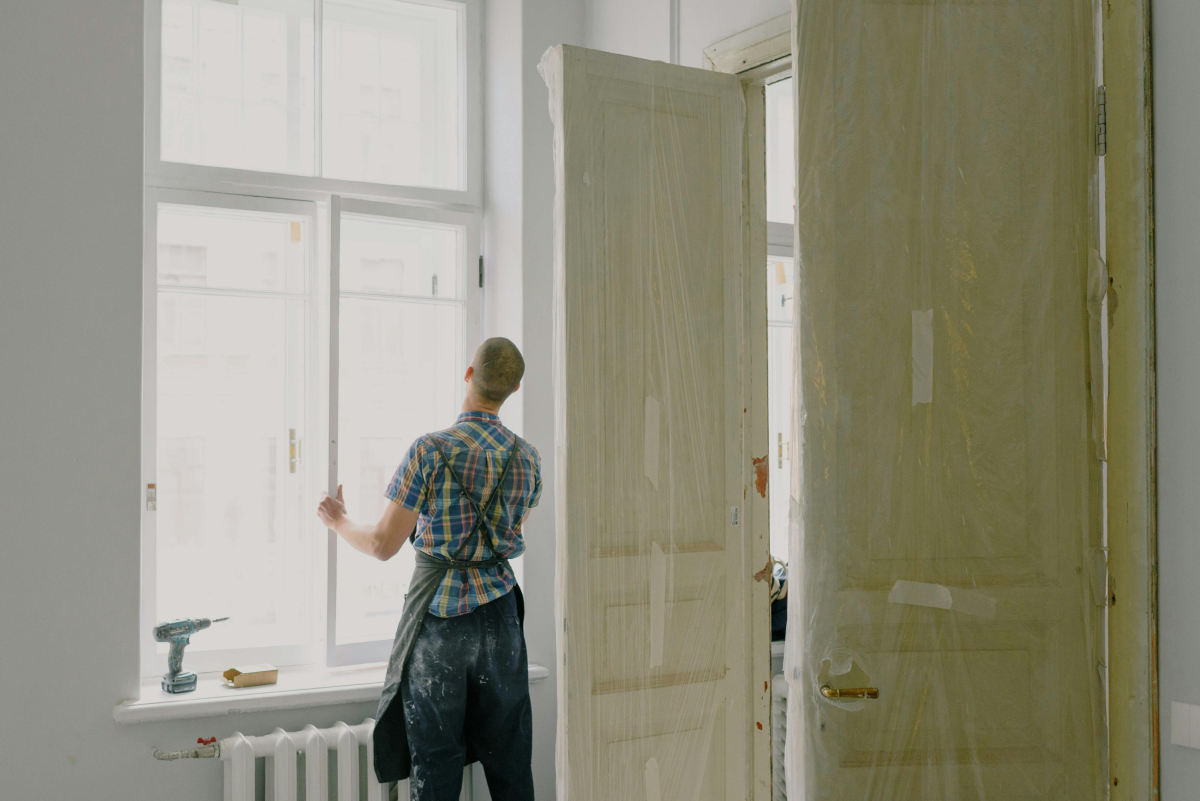When we think about carbon pollution, we tend to picture the most sinister culprits: belching factories, coal-fired plants, fuel-guzzling SUVs. We rarely think of our own homes. Homes symbolize safety and domesticity. They don’t have gas tanks, smokestacks or flaming pits of coal.
Yet, buildings — those we shop and work in but also those we live in — produce 40 per cent of global greenhouse gas emissions. In Canada, the buildings — how we construct them and how we operate them — are the third-largest carbon polluter, and emissions are rising. The hewing of wood, the mixing of concrete, the milling of steel — these are energy-intensive operations. So, too, is the business of trucking materials to a construction site and then assembling them, often with the aid of heavy machinery. Even when a building is finished, it still requires immense energy to heat and run.
But addressing the problem is less daunting than it may seem. With the right mix of boldness and ingenuity, we could make our buildings not only greener but more affordable and resilient. In many ways, the future transformation of our homes and workplaces could mirror the transformation we’re seeing in the automotive sector.
On the roads today, traditional gas cars travel alongside hybrid, plug-in hybrid and all-electric vehicles — options that meet individual car owners where they're at when it comes to balancing cost, environmental impact and concerns like "range anxiety.” There is no one-size-fits-all solution.
Embracing a mix of emerging technologies can enable a similarly flexible approach. In Canada, there’s no shortage of these homegrown innovations, the kind that can drive down the construction and operational emissions — and cost — of buildings. Some companies, like CarbiCrete, which produces carbon-negative concrete, or ZS2 Technologies, which offers sustainable alternatives to drywall, are specializing in green building materials.
Others, like BrainBox AI, which uses artificial intelligence to make heating, ventilation and cooling (HVAC) systems as efficient as possible, and Miru Smart Technologies, a developer of intelligent windows, are reducing the amount of energy that individual buildings consume. Others are addressing the construction process: Promise Robotics uses AI-driven robots to build modular prefabricated homes, which can be assembled in warehouses with minimal energy costs and waste.
None of these innovations on their own is a silver bullet. That includes heat pumps, which are growing in popularity as a way to efficiently use electricity instead of fossil fuels to heat buildings. In a world where vehicles and industrial processes are also going electric — and are competing with heat pumps for the same clean sources of power — there’s a real risk that demand for electricity will grow faster than supply. We need to manage the transition carefully to maintain grid stability.
But innovation allows us to get smarter and more creative. For example, digital technologies exist today, from companies like Toronto-based BKR Energy, to enable hybrid heat pump systems for Canadians who aren’t yet convinced they should retire their gas furnace or oil-fired boiler.
Remember the vehicle analogy? Like plug-in hybrid cars, hybrid heating systems can run on electricity most of the time but rapidly switch to furnace mode on extremely cold nights, or when electricity prices are much higher than using a fuel like natural gas. It’s an option for homeowners not ready to go all-electric, yet it still allows them to significantly reduce emissions without sacrificing comfort, reliability and affordability. An added bonus is that it also takes pressure off the grid.
A similarly flexible approach is needed when thinking about decarbonizing Canada’s building stock and the role of new innovation, and this is where industry and government have essential roles to play.
The buildings and construction industry — architects, designers, developers, builders and manufacturers — can accelerate the transition to net-zero buildings by being more collaborative. No individual organization can solve this problem on its own, which is why groups like MaRS Discovery District are working to build a “coalition of the willing.”
Rapidly scaling the adoption of low-carbon building technologies will only come from a shared understanding of what’s out there, what has been tried and what works. Better co-operation also spreads the risk of trying out new approaches.
Governments, meanwhile, must send a clear signal to those who own, build and operate buildings by creating policies and incentives that establish firm targets and desired outcomes, but which avoid being overly prescriptive on how to get there. There’s no time to waste.
We know, for example, that Canada needs 5.8 million new homes by 2030. According to the Task Force for Housing and Climate, strong government leadership and clear policies related to the construction and operation of those homes, including the embodied carbon of building materials, could slash their emissions by more than 80 per cent. Just as important, it would reduce energy costs for homeowners.
Our built environment may be one of the largest sources of global emissions, but it doesn’t have to be. With foresight, industry-wide co-operation and the right mix of government support and guidelines, we can leverage homegrown innovations and radically reduce the impact our buildings have on our climate.
David McFadden is chair of Toronto Hydro. Tyler Hamilton is the senior director of climate at MaRS.







Comments
If you're going to talk about new builds perhaps the first thing to look at is housing size. Typical subdivision houses are much larger than needed. If all new houses were say 50% smaller on average we would save 50% of potential emissions right there.
Mandate geothermal district heating or ground source heating for all these new builds and there are very few ongoing emissions from these builds.
Increasing the energy efficiency of buildings starts with incorporating smart design and an informed understanding of environmental factors affecting the building site, i.e. sun exposure, wind patterns and the like. Unfortunately, to date the vast majority of residential housing is designed and constructed without any consideration of these environmental factors at all.
The second step in reducing the environmental impact of buildings, particularly residential housing, is to reduce the overall size of individual homes. This means stopping the insidious spread of McMansions and abandoning the ubiquitous “keep up with the Joneses” mentality that is so prevalent in our society. Smaller houses require less space, use fewer construction materials, require less energy to maintain a comfortable ambient temperature within, and have a smaller environmental footprint overall than their larger counterparts. Reducing the size of residential buildings also translates into more residential housing units built for the same amount of construction materials and labour; this is a definite plus for the current housing shortage.
If we proactively design and build housing using the proven principles of passive solar construction, we could dramatically reduce the energy consumption of our homes, and enjoy a more comfortable living space while doing so. Orientating our homes to take advantage of solar exposure will also encourage the installation of solar panels, thereby contributing to an overall increase in renewable energy. Building new heavily insulated homes and retrofitting older ones as much as possible will reduce the energy consumption of our homes while keeping them warmer in winter and cooler in summer.
Great points by the commenters above.
Living in severely geographically constrained Metro Vancouver, it's obvious it's only a matter of time until the detached single family home sitting on a large open lot is declared obsolete.
The article focused on building tech, but missed the advent of precision-built factory-controlled Passive House components being trucked to and assembled very quickly on site. Mass timber, a sustainable alternative to concrete, was also not explored. Nor was the very high effiencies of density, even modest densities above the sprawling subdivisions still being built today for some unfathomable reason. Or the overall advantages of a frequent transit network on the emissions and energy profiles of entire communities.
Linking building tech with efficacious urbanism requires joined up thinking. Our cities and qualiry of life would be much better off when climate action at both scales are addressed together.
"Governments, meanwhile, must send a clear signal to those who own, build and operate buildings by creating policies and incentives that establish firm targets and desired outcomes, but which avoid being overly prescriptive on how to get there."
Policies, yes. Incentives? How about "do you want to continue making a profit in this sector?" Is that incentive enough?
“coalition of the willing.”
How about a complementary "coalition of the kicking & screaming?"
"Rapidly scaling the adoption of low-carbon building technologies will only come from a shared understanding of what’s out there, what has been tried and what works. Better co-operation also spreads the risk of trying out new approaches."
The world doesn't need yet another clearinghouse for information on creating a sustainable built environment.
There have been global NGOs and intergovernmental organizations working this issue for a very long time. Link to them.
Architecture 2030** launched, by Ed Mazria, in 2006 remains very active, very respected, and has provided solutions.
UsersTCP, a collaboration of 15 OECD nations, has been active for years and offers "Socio-technical research to inform policy making for clean, efficient and secure energy transitions"; i.e. publicly available research, reports and outreach (including terrific webinars). There was one just yesterday morning on "improving consumer engagement with demand-response" (e.g. how to get buy-in for smart meters and peak load reductions).
Leonardo Energy*** (can't overstate its value! Take 1 minute to peruse its landing webpage), funded and maintained by the copper industry, has been offering its own, high-value webinars on the energy transition for years (I've been attending them for 15+ years), and has recently been expanding to link to other webinar series (e.g. UsersTCP). They have a YouTube channel with 500+ recorded lectures. A SlideShare library of 800 white papers, reports, presentation decks, etc. I recommend getting on the mailing list to receive event notices (their audience is global; the webinars are usually out of Europe & generally start at 08:00 or 09:00 ET).
"With foresight, industry-wide co-operation and the right mix of government support and guidelines..."
The time for coaxing, mollycoddling, 'pretty please', and guidelines is long past. The primary incentive, as always, remains profit. A clear path for profit continuation is surely a requirement and companies will figure that out, given a new landscape (i.e. level playing field) of hard rules -- written mostly in terms of outcomes -- and accompanying compliance enforcement. Builders are not stupid, I assume.
The planet is burning. Step up. Bring on the low-energy, built environment design codes. Yesterday.
**https://www.architecture2030.org/
***https://userstcp.org/
***leonardo-energy.org